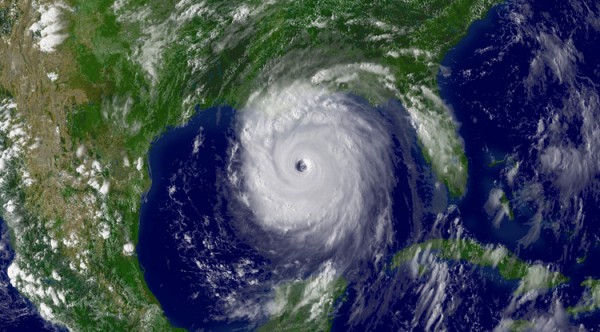By Ana Verayo, | March 08, 2016

Hurricane Katrina on Aug. 28, 2005
Understanding how hurricanes work lie in investigating historical records and determining factors that occurred during that time. However, this approach has been restricted as official records by the National Hurricane Center only began in the middle of the 1800s.
Now, in order to study past weather without data from records, a good indication would be remnants from those events such as shipwrecks.
Like Us on Facebook
A new study by researchers from the University of Arizona combined data from tree ring records and Spanish shipwrecks where they discovered that there was a 75 percent decline in the number of hurricanes in the Caribbean during 1645 to 1715. This is also a period when there was a decrease in sunspot activity as cooler weather prevailed in the Northern Hemisphere.
According to lead author of the study, Valerie Trouet from the University of Arizona's Laboratory of Tree-Ring Research, with the help of this data combined from shipwrecks and tree rings, the Caribbean hurricane record has been extended back in time to improve the understanding of hurricane variables.
It was relatively easy for researchers to gather data from shipwrecks during the 17th and 18th centuries, since galleon trade and ship traffic were busy at the time. Since these ships were carrying valuable goods like gold, Spain was able to keep track in their records their departures and arrivals, and when a ship did not reach its main destination, it reflected in their records.
Apparently, these important gold trade records are also documented in a book known as "Shipwrecks in the Americas: a complete guide to every major shipwreck in the Western Hemisphere" by Robert F. Marx, that is a valuable resource by treasure hunters today.
Apart from shipwrecks, another important clue to hurricane activity during this time is tree ring growth as trees grow slower during hurricanes. Researchers from the University of Arizona then combined these two sets of data of shipwrecks and tree rings and found that hurricane patterns from both data sets overlapped with each other during 1707 to 1825.
This slowdown due to a decline of storms revealed by the data corresponds to a period known as Maunder Minimum. Trouet says, we were not searching for clues about the Maunder Minimum but it was clearly stated on the data.
This period is caused by low sunspot activity and since Earth receives less solar energy and radiation during this weak solar activity, the Northern Hemisphere experienced cooler weather patterns and climates. Scientists then pinpointed this period with the decline of Caribbean hurricanes, from a time when the planet was absorbing less energy from the sun.
Researchers believe that these new findings and new methods of determining past weather patterns and climates by studying hurricanes can be especially critical to developing current climate models, suggesting that bigger storms will become more frequent since the planet has been warming up.
This study is published in Proceedings of the National Academy of Sciences.
-
Use of Coronavirus Pandemic Drones Raises Privacy Concerns: Drones Spread Fear, Local Officials Say

-
Coronavirus Hampers The Delivery Of Lockheed Martin F-35 Stealth Fighters For 2020

-
Instagram Speeds Up Plans to Add Account Memorialization Feature Due to COVID-19 Deaths

-
NASA: Perseverance Plans to Bring 'Mars Rock' to Earth in 2031

-
600 Dead And 3,000 In The Hospital as Iranians Believed Drinking High-Concentrations of Alcohol Can Cure The Coronavirus

-
600 Dead And 3,000 In The Hospital as Iranians Believed Drinking High-Concentrations of Alcohol Can Cure The Coronavirus

-
COVID-19: Doctors, Nurses Use Virtual Reality to Learn New Skills in Treating Coronavirus Patients







